This is a continuation of testing of the following macro lenses :
- Sony 90mm f/2.8 FE Macro
- Leica 100mm f/2.8 Apo Macro-Elmarit-R
- Zeiss 100mm f/2 Makro-Planar ZF
- Nikon 105mm f/2.8 Micro-Nikkor G VR
- Coastal Optical 60mm f/4 UV-VIS-IR
The test starts here:
I did a set of tests for LoCA and focus shift at 1:2 magnification earlier in this test, and yesterday I started testing at 1:10 with the Coastal Optical lens. Today I’ll show you LoCA and focus shift results for the Sony 90/2.8 at 1:10.
At f/2.8:
The vertical axis is MTF50, measured in cycles per picture height (cy/ph). The horizontal axis is camera position shift in cm (not mm, as was the case in the 1:2 tests). The points on the left side of the graph are with the camera farther away from the subject than the points on the right. I used a 500 um (0.5 mm) step size. The three raw channels are plotted.
The 1:2 results are here:
You can see that the Sony macro is about as sharp at 1:10 as the very commendable results at 1:2. LoCA is about the same, too.
Here are the results at f/4, f/5.6, f/8, and f/11:
The lens is even sharper at 1:10 than at 1:2 when stopped down a little.
Now the focus shift results in all three raw channels:
There’s more focus shift at 1:10 than there was at 1:2. Not enough to make this a bad lens in any sense of the word, but enough that you’ll want to focus at taking aperture for critical work.
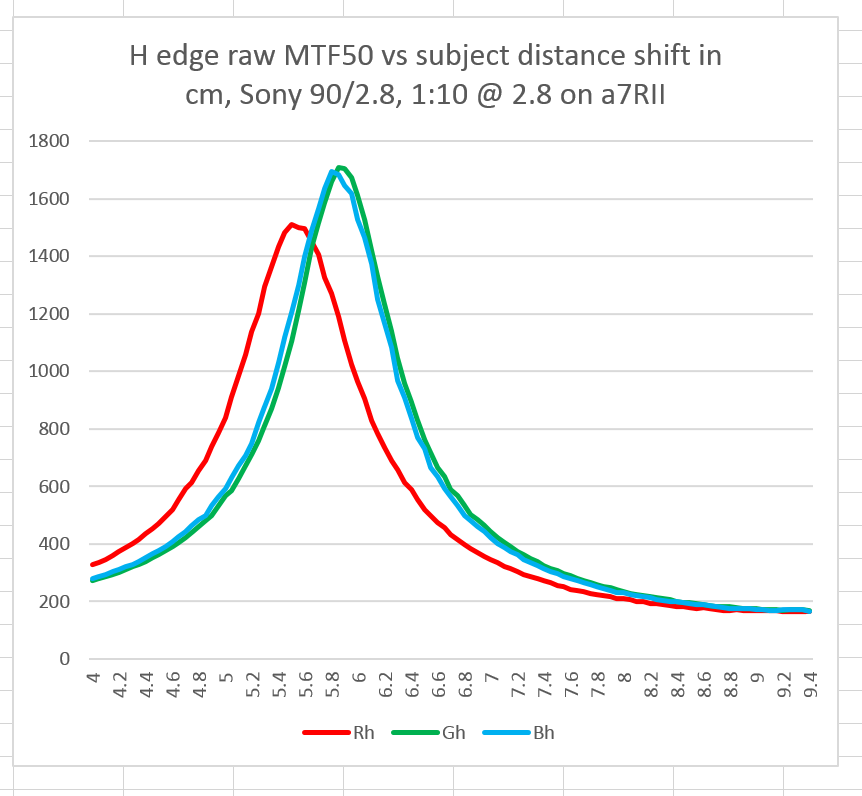
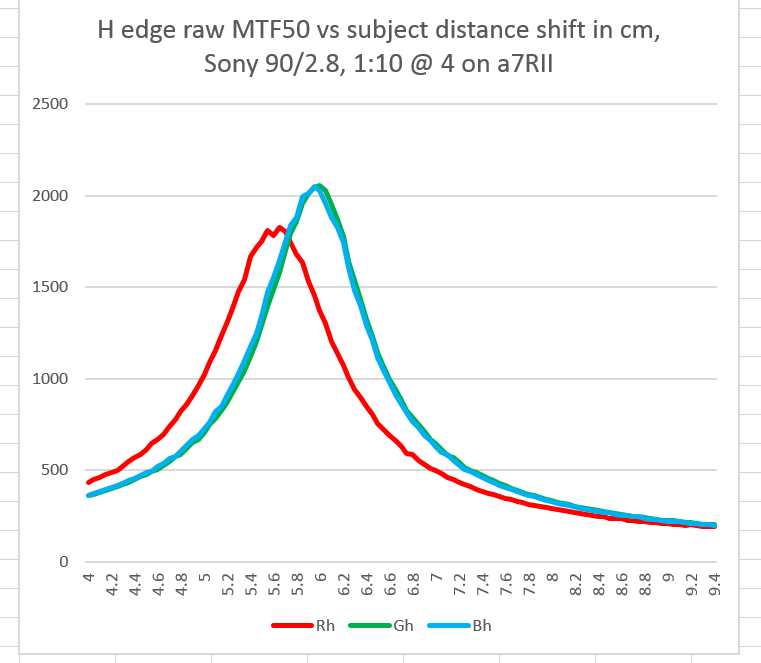
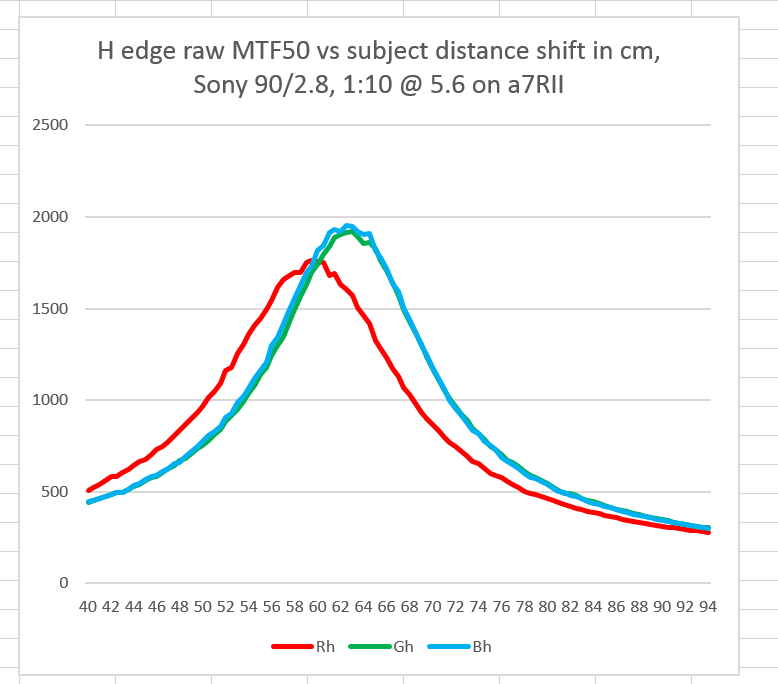
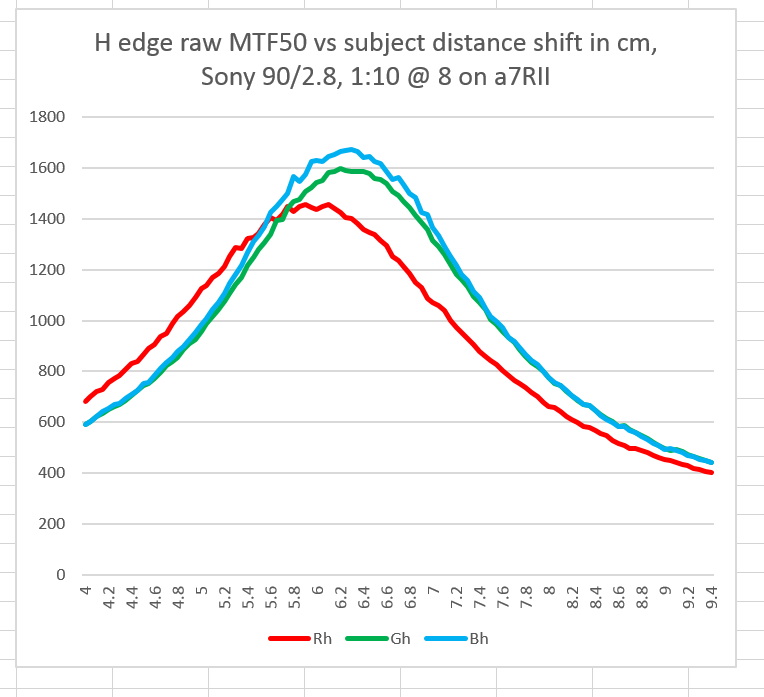
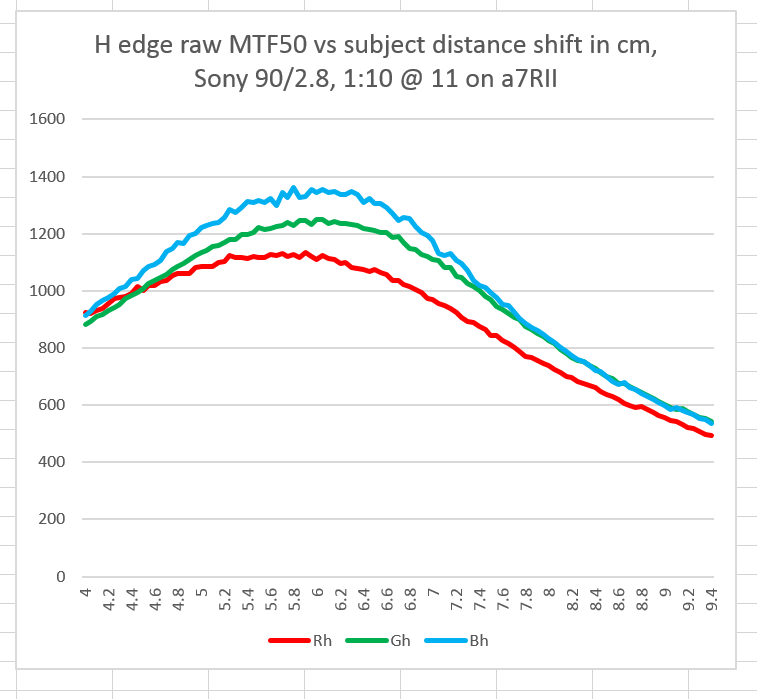
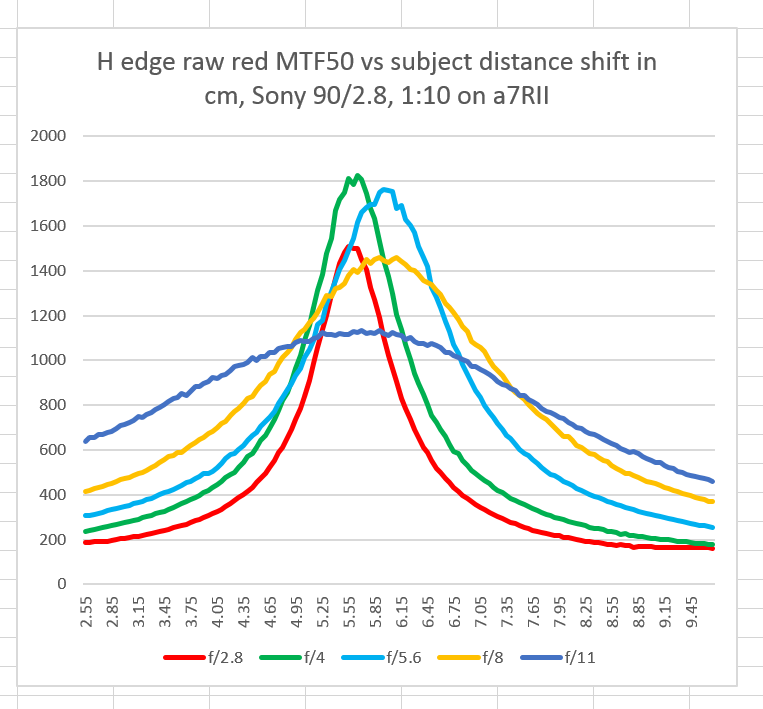
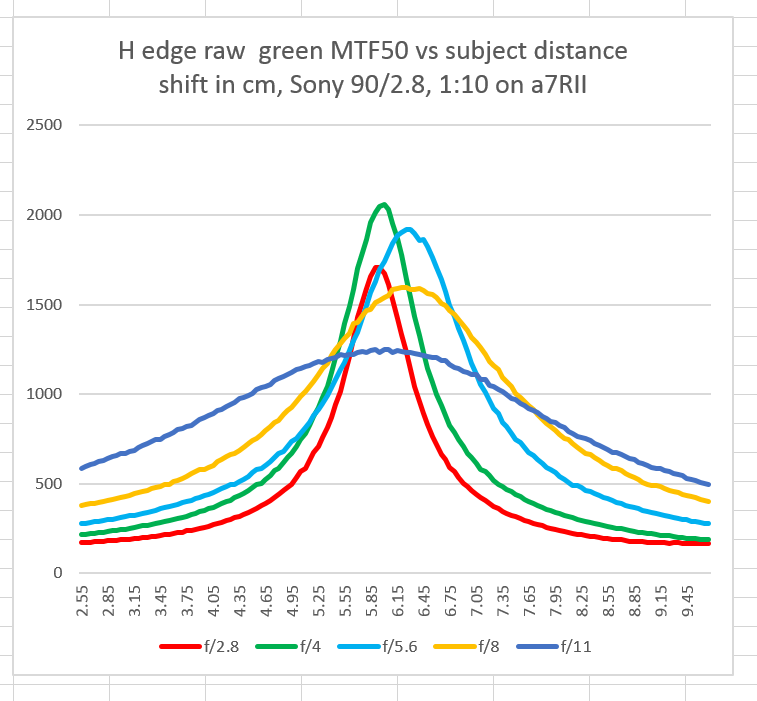
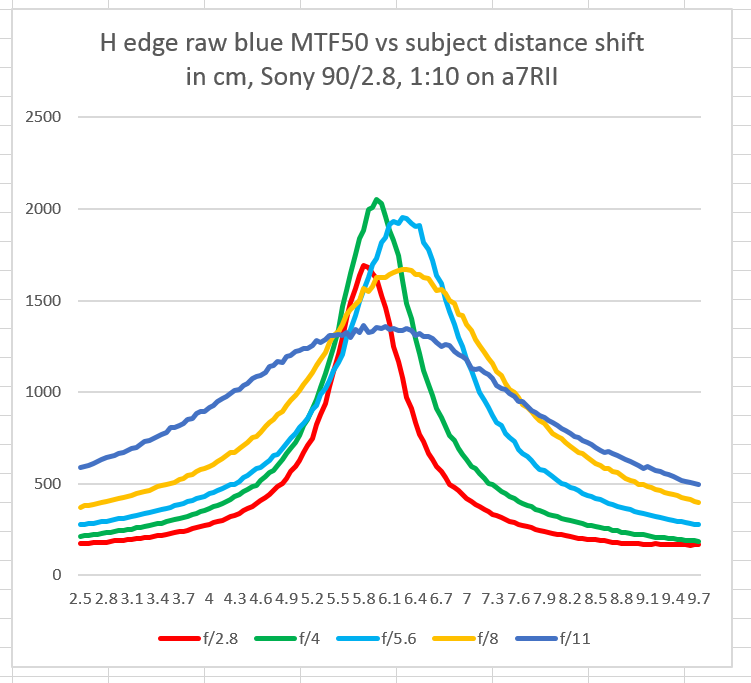
Fascinating series and Thanks!, but other than the Sony 90mm and maybe Nikkor, they are for rather exotic lenses that I speculate are quite out of the main-stream. (I do envy and try to avoid coveting what I perceive to be your “Gear List” 😉 ).
I think you are providing a very valuable service to put a spot-light on the focus shift issue. I consider that up there with Roger Cicala at LR putting a “focus” on the consistency / variance issue, especially for Sony. Again, thanks.
Have you considered doing similar LOCA / focus shift tests of more main-stream lenses you might own … such as the FE55 and/or FE28 as applicable? That might be of much higher general interest level. I realize these tests are very time consuming and no doubt tedious.
One of my take-away’s from the testing is that if these premium lenses have LOCA / focus shift problems, then should we shudder to consider how mid-level and entry level lenses perform? Zooms? Should CaNikon owners be avoiding the practice of “focus wide open”, which I think is the default and could be a hassle to avoid.
And am I revealing my ignorance my thinking that LOCA and focus shift are highly related? Or is that yet another issue on which I am clueless?
And hope your health is improving. Any progress you’d be willing to share? “Inquiring minds want to know” 😉